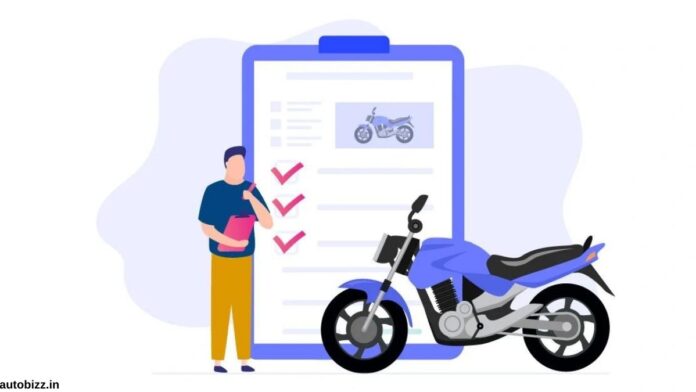In India, two-wheelers are more than just a mode of transportation; they are a way of life. Whether it’s weaving through traffic-clogged city streets or exploring scenic country roads, riding a motorcycle or scooter is a quintessential experience for millions of Indians. However, this freedom on two wheels comes with a responsibility – the responsibility to ensure your safety and the safety of others on the road. This is where bike insurance comes into play. In this article, we will delve into one specific type of bike insurance – Third-Party Bike Insurance – and analyze its benefits and drawbacks.
Understanding Third-Party Bike Insurance
Before we dive into the pros and cons, let’s first understand what Third-Party Bike Insurance is.
Third-Party Bike Insurance is a type of insurance that provides coverage against any legal liabilities arising from accidents involving your two-wheeler. It does not cover the damage to your own vehicle but focuses on protecting you from the financial consequences of injuring others or damaging their property.
Here are the key elements of Third-Party Bike Insurance:
1. Third-Party Liability: This type of insurance covers the costs of injuries or property damage to a third party. If you are involved in an accident where you are at fault and cause harm to someone else or their property, your insurance policy will cover the associated liabilities.
2. Mandatory Requirement: In India, Third-Party Bike Insurance is a mandatory requirement for all two-wheeler owners. You cannot legally ride a motorcycle or scooter without this insurance.
3. Affordable Premiums: One of the significant advantages of Third-Party Bike Insurance is its affordability. The premiums are relatively low compared to comprehensive insurance policies because it does not cover the damage to your own vehicle.
Benefits of Third-Party Bike Insurance
1. Legal Compliance: The most significant benefit of Third-Party Bike Insurance is that it ensures compliance with the law. Riding without insurance is illegal, and if caught, you can face penalties and fines. By having Third-Party Insurance, you fulfill the legal requirement to ride your two-wheeler.
2. Affordable Premiums: This type of insurance is budget-friendly. If you’re on a tight budget or have a low-value two-wheeler, Third-Party Insurance is a cost-effective way to meet the legal requirements and protect yourself from potential liabilities without breaking the bank.
3. Financial Protection: In case of an accident where you are at fault and cause injury to a third party or damage to their property, Third-Party Insurance covers the associated financial liabilities. This means you won’t have to bear the expenses out of your pocket.
4. No Claim Bonus (NCB) Protection: Third-Party Insurance does not affect your eligibility for No Claim Bonus (NCB). NCB is a discount on your insurance premium for every claim-free year. Even if you have Third-Party Insurance, you can accumulate NCB for future comprehensive insurance policies.
Drawbacks of Third-Party Bike Insurance
While Third-Party Bike Insurance has its merits, it also comes with some significant drawbacks:
1. Limited Coverage: The primary drawback of Third-Party Insurance is that it offers limited coverage. It only covers the liabilities arising from accidents involving third parties. It does not cover the damage to your own vehicle, which can be a significant financial burden in the event of an accident.
2. No Own Damage Protection: If your two-wheeler is damaged in an accident where you are at fault or in case of theft, natural disasters, or vandalism, Third-Party Insurance will not provide any financial assistance. You will have to bear the entire cost of repairs or replacement.
3. Inadequate for High-Value Two-Wheelers: Third-Party Insurance is more suitable for low-value two-wheelers. If you own a high-value motorcycle or scooter, the limited coverage may not be adequate to protect your investment. In such cases, a comprehensive insurance policy is recommended.
4. Risk of Financial Burden: If your two-wheeler is involved in an accident where you are at fault, the financial burden of repairing or replacing your vehicle can be substantial. This can have a significant impact on your savings and finances.
5. Reduced Flexibility: With Third-Party Insurance, you have reduced flexibility in choosing the extent of coverage you want. You cannot add additional protections or customize your policy to meet specific needs.
The Role of Comprehensive Insurance
Comprehensive Two-Wheeler Insurance, on the other hand, provides a broader scope of coverage. It includes Third-Party Liability coverage as well as coverage for damages to your own vehicle. This means that in case of an accident, theft, natural disaster, or vandalism, your comprehensive policy will cover the costs of repairs or replacement for your two-wheeler.
The benefits of Comprehensive Insurance include:
1. Full Coverage: Comprehensive insurance offers complete coverage for both third-party liabilities and damages to your own vehicle.
2. Protection for High-Value Two-Wheelers: If you own a high-value motorcycle or scooter, comprehensive insurance is the best way to ensure your investment is adequately protected.
3. Flexibility: You have the flexibility to add additional coverages like Zero Depreciation, Personal Accident, or Roadside Assistance to your comprehensive policy.
4. No Claim Bonus (NCB): Comprehensive insurance policies also offer No Claim Bonus (NCB), which can significantly reduce your premiums over time.
Conclusion
Third-Party Bike Insurance serves a vital role as it fulfills the legal requirement to have two-wheeler insurance. It is an affordable option, especially for low-value two-wheelers, and provides financial protection against third-party liabilities. However, it comes with significant limitations, primarily the lack of coverage for damages to your own vehicle.
If you own a high-value two-wheeler, it’s advisable to consider Comprehensive Insurance. While the premium may be higher, the peace of mind and comprehensive coverage it provides are well worth the investment. With comprehensive insurance, you can enjoy the freedom of the road without worrying about the financial burden of repairs or replacement in case of an accident or other unforeseen events. In either case, it’s crucial to be adequately insured to ensure your safety and the safety of others on the road.
Also Read: From Basic to Comprehensive: The Benefits of HDFC ERGO Bike Insurance for Your Ride!
A Comprehensive Guide to HDFC ERGO Car Insurance







